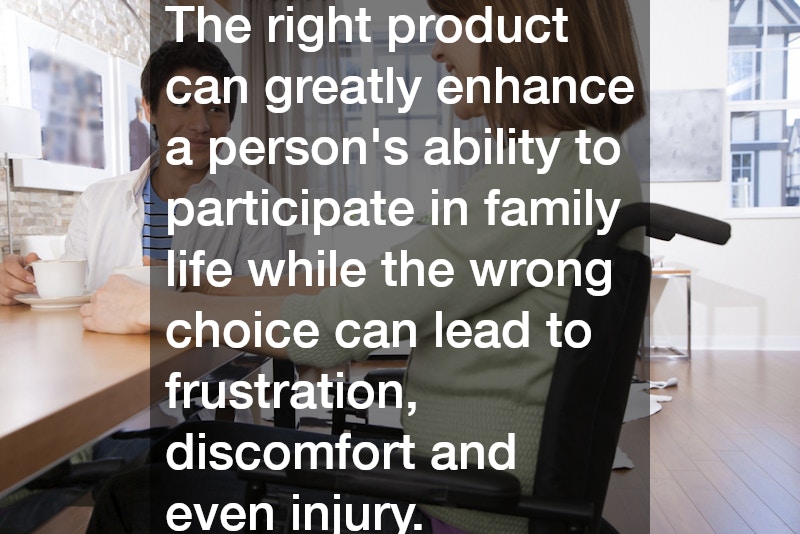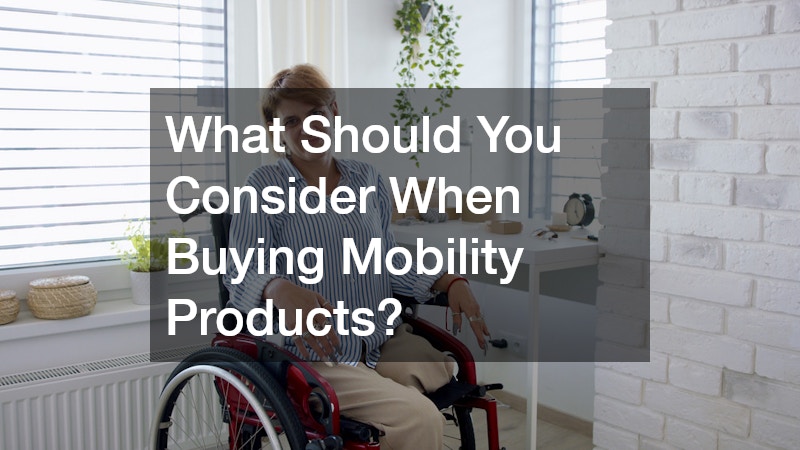Mobility products play a vital role in maintaining independence and quality of life for individuals with physical challenges. Whether for ageing individuals, people recovering from injury, or those living with disability, these devices support safer, more comfortable movement and engagement in daily life. However, the process of selecting the right equipment requires careful thought and consideration.
Factors such as user needs, environment, product features and after-sales support all play a role in making a well-informed decision. With so many options on the market, it’s essential to evaluate both the short-term and long-term implications of your purchase.
Understanding the User’s Needs
The first and most important step in purchasing mobility products is understanding the specific needs of the person using them. Not all conditions are the same and even individuals with similar diagnoses may require very different types of support. Consider the level of mobility the user currently has and how that is likely to change over time. For example, someone with a progressive condition may need a product that accommodates future deterioration, while someone recovering from surgery may benefit from a temporary solution that offers greater flexibility.
It is also important to assess the user’s daily routine, lifestyle and level of independence. Will the product be used indoors, outdoors, or both? Does the individual travel frequently and require a portable option? These considerations will influence whether a lightweight walker, a motorised scooter, or a wheelchair is more suitable. Professional assessments by occupational therapists can be highly valuable in this process, offering guidance that goes beyond surface-level features and price.
Comfort should never be underestimated. Since many mobility products are used for extended periods each day, ergonomic design and user comfort can make a significant difference in quality of life. Features like adjustable components, padded seating and easy-to-use controls are not just conveniences — they are essential to ensuring regular, safe use.
Product Features & Safety Considerations
Not all mobility products are created equal and one of the biggest distinctions lies in safety features. These are particularly important for users who may be at risk of falls or other injuries. A quality product will come with non-slip surfaces, reliable brakes, stable wheels and easy manoeuvrability. When evaluating different models, it’s crucial to ensure the item complies with relevant Australian safety standards, which provide peace of mind regarding durability and reliability.
Durability is another major concern. Mobility products represent a significant investment and it’s important to ensure the materials and craftsmanship can stand up to daily use. Frame strength, battery life (for electric models) and weather resistance should be examined carefully, especially for equipment that will be used outdoors or exposed to varying conditions.
It’s also worth considering how easy the product is to maintain. Some devices require regular servicing, particularly electric scooters and powered wheelchairs. Knowing in advance what the ongoing maintenance needs are — and how readily parts can be replaced — will save time, frustration and money in the long run.
Technology has also enhanced many modern mobility products. Some now include smart features like GPS tracking, digital health monitoring, or smartphone connectivity. While these innovations can be incredibly useful, they’re not always necessary, especially for users who prefer simplicity. Evaluating whether the added cost aligns with the user’s actual needs is a sensible approach.
Supplier Support & Aftercare
The role of the supplier is just as critical as the product itself. Purchasing mobility products from a reputable supplier ensures access to proper guidance, warranty support and future servicing. A good supplier will offer a consultation process, provide options for trial or demonstration and have trained staff available to answer questions.
Aftercare services, such as maintenance support or loaner products while repairs are being carried out, can be a game changer in emergencies. Consider whether the supplier has a physical presence in your region or if they rely solely on online communication. Local service can reduce downtime and provide faster solutions when issues arise.
Another consideration is funding or subsidies. Australia has multiple pathways for funding assistive technology, including the National Disability Insurance Scheme (NDIS), My Aged Care and private health insurance. Understanding what financial support is available can significantly affect the decision-making process and reputable suppliers often assist customers with the paperwork and eligibility checks required.
Making the Right Choice
Buying mobility products is not merely about picking something off the shelf. It’s a process that involves understanding physical capabilities, anticipating changes, evaluating features and selecting a supplier you can trust. The right product can greatly enhance a person’s ability to participate in family life, social activities and community events, while the wrong choice can lead to frustration, discomfort and even injury.
Mobility products are, above all else, tools for empowerment. They bridge the gap between dependence and independence, allowing people to regain control over how they move through the world. Taking the time to research and consider every aspect of the purchase ensures a better outcome for both the user and their support network.
Investing in the right mobility solution is more than a matter of convenience — it’s a decision that impacts daily life, long-term health and personal freedom. With careful planning, professional input and thoughtful evaluation, Australians can confidently select mobility products that truly support their journey toward greater independence.




